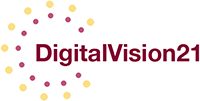There has been a lot of discussion over the past few years about the importance of being able to deliver product/service recommendations to customers based on their individual needs. Customers have grown to expect that the companies they do business with know them – know what services they already have with the company, and know them well enough as individuals to be able to anticipate their needs. They have little tolerance for seeing generic product solicitations that aren’t relevant to their lives and interests. The personalization of offers has become the Holy Grail of Marketing and customer analytics.
Financial institutions exist on a pretty broad continuum with respect to customer analytics capabilities and the ability to identify meaningful opportunities for individual customers. Many banks and credit unions still have no meaningful analytics capabilities beyond running the occasional query against static data in the core system and dumping the results into Excel. Others have highly advanced and detailed data warehouses that can capture and analyze customer behavior in real-time, often using AI/Machine Learning algorithms.
Many articles have been written about how larger banks and FinTechs have made huge investments in resources to mine the extensive customer data that they capture in order to generate personalized insights. It might seem that these technologically sophisticated companies are rapidly leaving community financial institutions in the dust with their personalization capabilities. A couple of my recent experiences suggest that this may not be the case and that there are opportunities for companies with much smaller budgets to compete effectively.
I personally bank with Bank of America – a huge company that has invested hundreds of millions of dollars in its digital capabilities. They introduced their AI-driven virtual assistant Erica two years ago. Given this level of innovation, they should be setting the standard for personalization in financial services. But that’s not necessarily true.
I can’t recall receiving any communications from BofA via email, text, or through their mobile app that would suggest that they understand my needs and are proactive in presenting me with meaningful solutions. A couple of recent communications totally missed the mark.
The first was related to their COVID-19 communications that pretty much every company started sending to their customers. BofA’s emails to me focused on how they are prepared to help if needed regarding my credit card, mortgage loan, or other consumer loans. The problem is that I don’t have any of those products with BofA. You’d think they’d know that. If they wanted to use the pandemic as an excuse to communicate with me, it would have been nice if that communication was actually relevant to my needs.
The other recent example of glitches in their system came when they partnered with my mortgage loan servicer to try to induce me to switch to the servicer’s eStatements that are loaded directly into BofA’s Bill Pay system. They initiated a ‘trial’ on my behalf and encouraged me to check it out and then elect to make the receipt of eStatements permanent.
One thing I should note is that I set up automatic recurring monthly payments from my BofA account to the mortgage servicer eight years ago when I first bought my home. But after the start of this eStatement ‘trial’, BofA began sending me reminders a few days before each payment was due – even though they should easily be able to see that the payment had already been scheduled in their own system. And then they sent me additional reminders a few days after the payment due date saying that my payment may be overdue – even though their own Bill Pay system showed that the payments were made.
The result of this has been both annoying and disappointing. BofA took it upon themselves to solve a problem I didn’t really have, and their execution resulted in needless reminders that just wasted my time. The concept was a potentially good one, but the implementation was poor.
I’m not writing this to vent about BofA. I am actually very content with their digital platform, and I do pretty much all of my banking using their excellent mobile app. But I do want to use them as an example of a mega-bank that has invested tons of money in digital applications and still gets it wrong occasionally. They’re not omnipotent, which should be somewhat heartening to community banks everywhere.
Linking customer notifications to account and Bill Pay activity can be a very worthwhile customer feature, and it’s pretty simple to do even for banks a few orders of magnitude smaller than BofA. It all starts with creating a database of customer information that’s updated at least daily with data from the bank’s core system, mobile/online banking platform, and third-party servicing platforms. This is all relatively low-hanging fruit that can provide the foundation for building customer analytics capabilities that can be expanded over time to incorporate data from more diverse and unstructured sources.
The thought of creating a customer analytics platform can sound intimidating, but it is actually much simpler than you might imagine. You can then use it to add value to your customers by providing meaningful notifications and recommendations, and in the process remain competitive with much larger players.

